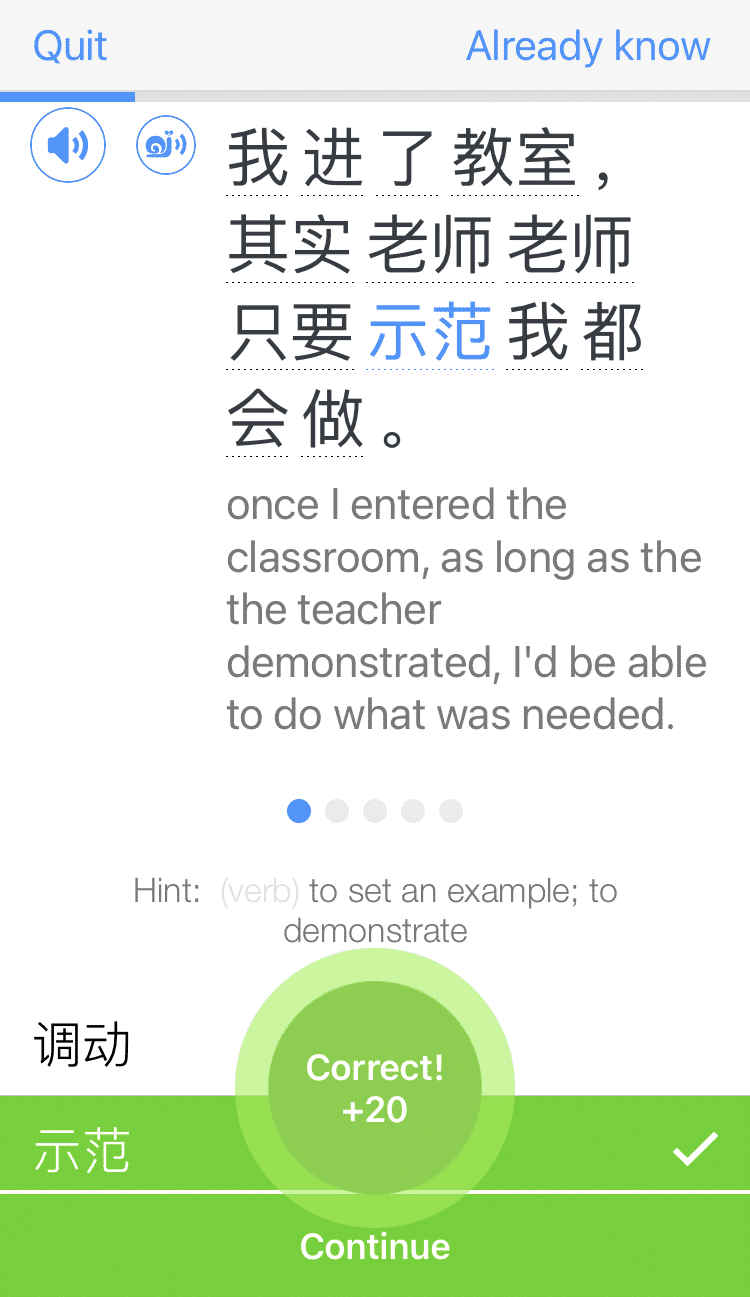
The Ultimate Guide to Chinese Pronunciation
If you’re starting to learn Chinese, you’ve probably realized that there are a lot of differences in pronunciation.
Using a different tone or inflection can completely change what you are trying to say.
Lucky for you, we have created a straightforward guide to make it even easier to learn those differences and achieve more confidence in your Chinese pronunciation!
Contents
Download: This blog post is available as a convenient and portable PDF that you can take anywhere. Click here to get a copy. (Download)
The Basics of Mandarin Pronunciation
Pronunciation comes from a combination of three factors: mouth shape, tongue placement and air flow.
Most Chinese sounds require the same mouth shapes and tongue placements as English. When it comes to air flow, Chinese doesn’t use as much of the diaphragm and throat to make sounds.
Mandarin syllables are broken down into initial sounds (initials), final sounds (finals) and tones.
The best way to catch on to these is to listen to native speakers. An immersive language learning program like FluentU can be a great resource for this.
FluentU takes authentic videos—like music videos, movie trailers, news and inspiring talks—and turns them into personalized language learning lessons.
You can try FluentU for free for 2 weeks. Check out the website or download the iOS app or Android app.
P.S. Click here to take advantage of our current sale! (Expires at the end of this month.)
By listening to native speakers, you will pick up on their tone and the sounds of the language!
Initial Sounds
The initial sound is the initial syllable of the word, and is usually only a consonant. If we look at 拼音 (pīnyīn) as an example, the initial sound of 拼 is p (like the “p” in “pot”).
Key Initial Sounds
| Initial | Pronunciation | Example |
|---|---|---|
| b | "bwo" | |
| p | "pwo" | |
| m | "mwo" | |
| f | "fwo" | |
| d | duh" | |
| t | "tuh" | |
| n | "nuh" | |
| l | "luh" | |
| g | "guh" | |
| k | "kuh" | |
| h | "huh" | |
| j | "jee" | |
| q | "chee" | 七 (qī) — seven |
| x | "shee" | 西 (xī) — west |
| zh | "jih" (English “j” but with your tongue above the ridge) | 知 (zhī) — to know |
| ch | "chih" (English “ch” but with your tongue above the ridge) | 吃 (chī) — to eat |
| sh | "shih" (English “sh” but with your tongue above the ridge) | 十 (shí) — ten |
| r | "rih" (English “r” but with your tongue almost touching the roof of your mouth) | 人 (rén) — person |
| z | "dz" (like the sound in “kids”) | ?? 组 (zǔ) — group |
| c | "ts" (like the sound in "kits") | ?? 册 (cè) — book |
| s | "si" | |
| w | ||
| y |
Final Sounds
The final sound has one or more vowels. It is worth noting that sometimes a word may be only the initial or final sound.
Looking again at “pīnyīn” (拼 — pīn) as our example, the final sound is “in” (like the “een” sound in “scene”).
Key Final Sounds
| Sound | Pronunciation | Example |
|---|---|---|
| ong | “O” as in “home,” “ng” pronounced strong through the nose | 红 (hóng) — the color red |
| ing | "Iing" as in "skiing," "ng" pronounced strong through the nose | 英 (yīng) — English |
| ü | "Louie" without the "L," softening the ending | 绿 (lǜ) — green |
Key Combinations
When you put initial and final sounds together you get combinations. These are some of the key combinations that you should know:
| Sound | Pronunciation | Example |
|---|---|---|
| zhi | English "j" with your tongue above the ridge, finishing with a soft "r" sound; like "jerk" without the "k" | 知 (zhī) — to know |
| chi | English "ch" with your tongue above the ridge, finishing with a soft "r" sound; like "chirp" without the "p" | 吃 (chī) — to eat |
| shi | English "sh" with your tongue above the ridge, finishing with a soft "r" sound; like "shirt" without the "t" | 十 (shí) — ten |
| zhe | English "j" with your tongue above the ridge, finishing with an "uh" sound | 这 (zhè) — this |
| che | English "ch" with your tongue above the ridge, finishing with an "uh" sound | 车 (chē) — car |
| she | English "sh" with your tongue above the ridge, finishing with an "uh" sound | 设 (shè) — to design; to establish |
Tones
Pinyin uses tone marks to signal the “shape” of the tone:
- The first tone is long and straight (mā).
- The second tone rises from its starting point (má).
- The third tone drops down a bit, then rises (mǎ).
- The fourth tone drops sharply (mà).
- The neutral tone does absolutely nothing (ma).
To see how this looks in pinyin, we can see that in “pīn” the tone is indicated by the mark over the i that tells us the tone is long and straight.
Pinyin
Chinese characters are basically hieroglyphs, a form of writing that gives no clues for pronunciation. Pinyin uses “English” letters to create new sounds and give you a hint for how things are pronounced.
Although some Chinese learners feel that pinyin is too much of a crutch, most will say that it’s very helpful. Learning Chinese well without pinyin is possible, but highly improbable, and its uses go far beyond the training wheels of pronunciation.
Key Pinyin Pronunciations
| Sound | Pronunciation | Example |
|---|---|---|
| ju | English "j" plus the ü sound | 句 (jù) — sentence, as in phrase |
| xu | English "sh" through your teeth plus the ü soundsound; like "chirp" without the "p" | 需 (xū) — to need |
| qu | English "ch" through your teeth plus the ü sound | 去 (qù) — to go |
| yu | Only the "ü" sound | 语 (yǔ) — language |
| yi | Only the "i" sound, pronounced "ee" | 一 (yī) — one |
| ying | Only the "ing" sound | 英 (yīng) — English |
| wu | only the "u" sound, pronounced "oo" as in "food" | 五 (wǔ) — five |
Chinese pronunciation will come easier and easier with more practice. Don’t forget that your greatest Chinese language learning resources are actual Chinese-speaking humans!
Download: This blog post is available as a convenient and portable PDF that you can take anywhere. Click here to get a copy. (Download)
And One More Thing...
If you want to continue learning Chinese with interactive and authentic Chinese content, then you'll love FluentU.
FluentU naturally eases you into learning Chinese language. Native Chinese content comes within reach, and you'll learn Chinese as it's spoken in real life.
FluentU has a wide range of contemporary videos—like dramas, TV shows, commercials and music videos.
FluentU brings these native Chinese videos within reach via interactive captions. You can tap on any word to instantly look it up. All words have carefully written definitions and examples that will help you understand how a word is used. Tap to add words you'd like to review to a vocab list.
FluentU's Learn Mode turns every video into a language learning lesson. You can always swipe left or right to see more examples for the word you're learning.
The best part is that FluentU always keeps track of your vocabulary. It customizes quizzes to focus on areas that need attention and reminds you when it’s time to review what you’ve learned. You have a 100% personalized experience.
Start using the FluentU website on your computer or tablet or, better yet, download the FluentU app from the iTunes or Google Play store. Click here to take advantage of our current sale! (Expires at the end of this month.)






